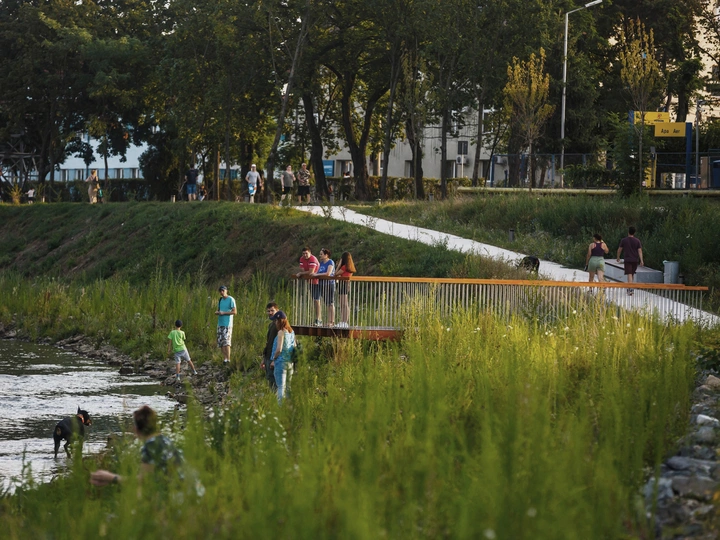A new green infrastructure on the Somes River

José Mayoral
José Ramón Sierra
PRÁCTICA was founded by Jaime Daroca, José Mayoral and José Ramón Sierra while working together at Harvard University Graduate School of Design. Their broad international professional experiences throughout Switzerland, UK, USA, Chile and Spain, and collaboration with firms such as Herzog & de Meuron, David Chipperfield Architects, Rafael Moneo, e2a Architekten, Tod Williams Billie Tsien, Sergison Bates Architects and Ábalos-Sentkiewicz, project a global view on their works of various scales and programs.
PRÁCTICA’s founders attended the Technical Schools of Architecture of Madrid and Seville (ETSAM and ETSAS), before pursuing a Masters of Architecture at Harvard University Graduate School of Design. They continue to have an active role in Academia through teaching and research positions at Harvard University GSD, Columbia University GSAPP, Universidad Católica de Chile and Academy of Art University in San Francisco, CA. PRÁCTICA has grown to become a diverse and multidisciplinary team of global professionals, with experts in architecture, urbanism and design. Their varied perspectives and experiences contribute to building a nourishing design environment that translates into creative and unexpected solutions. PRÁCTICA’s work has been exhibited and published at several international institutions such as MoMA New York, the Architecture Biennials of Venice, Chile and Spain, Harvard University Graduate School of Design, Columbia University GSAPP and University of Seville among others.
The proposal presented is the Somes River project, an urban design and landscape intervention in the city of Cluj-Napoca, Romania along 15 kilometers. This project can serve as an example of urban regeneration and renaturalization, from which lessons can be extracted for other urban contexts.
The Somes River crosses the city of Cluj-Napoca encountering diverse urban conditions: the historic center, industrial areas and housing neighborhoods. During the second half of the 20th century, its banks were modified with concrete walls, which established a drastic difference in height and limited the visual and physical connection between the city and the river.
The project's approach begins by recognizing the Somes as a green corridor capable of connecting with other nearby green spaces, which were functioning in isolation, thanks to the incorporation of a network of pedestrian paths, foot bridges and bike lanes. Thus, the riverbanks are activated as collective spaces for accessing the river and engaging with its fauna and flora.
Furthermore, the project recovers the natural character of the river banks, expanding and modifying the pre-existing thin and hard edge into a softer and more natural environment. This is achieved by widening the river section, which supports a system of terraces. And it allows the banks to become a more diverse ecosystem which hosts different species of local vegetation, rocks, sand and biorolls. Biodiversity, microclimate formation, CO2 absorption and invasive species control are promoted.
Moreover, the project reimagines the river as a dynamic social hub catering to various scales and activities. It serves as a space for interaction and exchange among the city's diverse communities. Through urban and architectural interventions, it fosters a new framework for dialogue and coexistence, uniting efforts of a multidisciplinary team, government agencies, and the everyday users of the area.